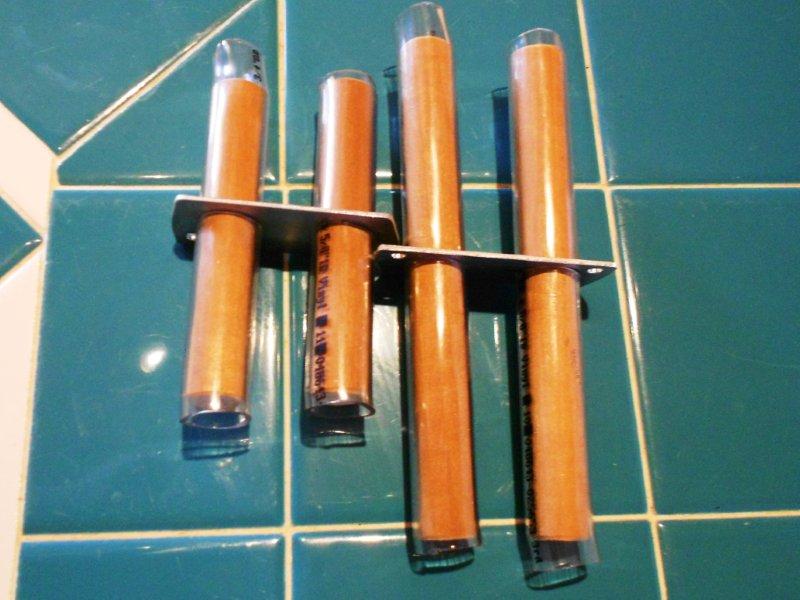Aviators, more specifically homebuilders, are constantly trying to save a pound. This is no different than most other “performance” hobbies – motorcycles, cars, etc… all benefit from reduced weight. I’ve heard it said that in Formula 1 auto racing (the most advanced form of motorsport) saving a pound is worth $100,000. That’s nice if you have that kind of money to burn. Those of us building our own aircraft don’t typically fit into that category.
The question recently came up: “How do you know how much time and/or money to invest in a part to save some weight.” Ahh, what a question!!
 First and foremost, all homebuilders must have safety in mind.
First and foremost, all homebuilders must have safety in mind.
Secondly, we all have a budget. Sometimes the decision is easy. The steel wheels are $500, the lighter Titanium wheels are $5,000. Easy decision for me. For some folks, $4,500 is no big deal so they do it.
Thirdly, the amount of effort required. When building a part, there are often ways to safely shave a bit of weight off. Safely generally means “without sacrificing strength.” In the composite world, vacuum bagging is very popular. I explored this once a few years ago. Bagged parts are beautiful and lighter because less epoxy is used (a better ratio of fiberglass/carbon fiber to epoxy (resin/hardener) is achieved). However; how much lighter is the point of interest here. For the parts of a size that most homebuilders can bag, the savings isn’t that much. I don’t have any specific examples but I know a few ounces on a typical part. The cost of those few ounces is in the equipment necessary to vacuum bag – which isn’t free. Investing several hundred dollars (maybe $500??) in equipment and supplies and then saving 2-3 lbs. over a whole airplane does not work for me (and my budget). Factor in the beauty of the bagged parts and maybe it does! 🙂 Aluminum parts aren’t much different. Shaving every extra chunk of material won’t net you much.
Finally, we are not building a spacecraft where every pound is vitally important and the comfort of the occupant is low on the priority list. We need some creature comforts. I want a comfortable seat, heat, music, some shade, and a few toys to play with.
The good news is that there are a number of areas where some real weight can be saved.
- Modern electronic instruments. A vacuum system is heavy. Old radios are heavy. Electric gyros are heavy. A modern glass cockpit saves a bunch of weight!
- Battery. The new AGM batteries have plenty of power and weight MANY pounds less. Depending on your electrical needs, expect to save at least 15 pounds by using an AGM battery.
- Wire. No, your not going to save much weight by replacing all 22 gauge wire with 24 gauge. However; moving that AGM battery to the firewall and replacing ten feet of zero gauge with #2 or #4 will save you several pounds. Which one will work for you? You have to test – it depends on the length of your cable and the draw of your starter.
- Beer belly. I know, we all hate to admit it but nearly all of us could change our lifestyle and drop an easy ten to twenty pounds – at least. I find the discussion of saving weight with a builder that is clearly WAY over weight to be very silly and I fit into this category. However; I am working on it! With this approach, we would be healthier, better able to enjoy our aircraft for a longer period of time (theoretically), and it will perform that much better. It’s a win-win!
So, what is pound worth? There is no one answer. It depends on at least your budget, schedule, and mission. You, the builder, have to balance all these issues. This is part of the reason that owner built and maintained aircraft evolve over time. While under construction, perhaps you could not afford the neato lightweight starter. A few years after completion, you can – go for it. We all get better with age, right?!?!



Leave a Reply